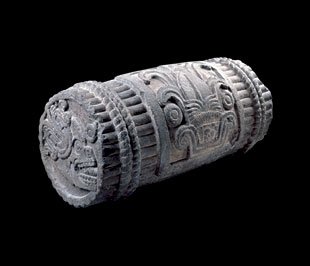|
























|
|









Writing and Calendars
The Aztecs used glyphs, or pictographs, to record history, geographic environments, and mythic tales. The range of surfaces on which glyphs were written included stone, ceramics, and textiles, as well as books, known as codices, mainly drafted on agave-fiber paper and deerskin. The tlacuilos or painter-scribes drew the essential signs that indicated the basic elements of the story, and supplementary information was learned by heart.
The numbering system was based on groups of 20, with a method of circles or dots that each had the value of one. There were two parallel calendars in Mesoamerica. One was a solar, agricultural calendar of 360 working days, to which were added five unlucky days called nemontemi. The tonalamatl was the divinatory 260-day ritual calendar, handled by the priests. Every 52 years, the two cycles began on the same day, marking the equivalent of the turn of one of our centuries. To celebrate this event, the Aztecs burned two bundles of reeds, xiuhmopilli, symbolizing the dead years, and lit a new fire that would burn for 52 more years.
Xiuhmolpilli, 1 Death. Aztec, ca. 1500. Stone, l. 61 cm, diam. 26 cm. Museo Nacional de Antropología, INAH, Mexico City. Photo Michel Zabé, assistant Enrique Macías.
|
|